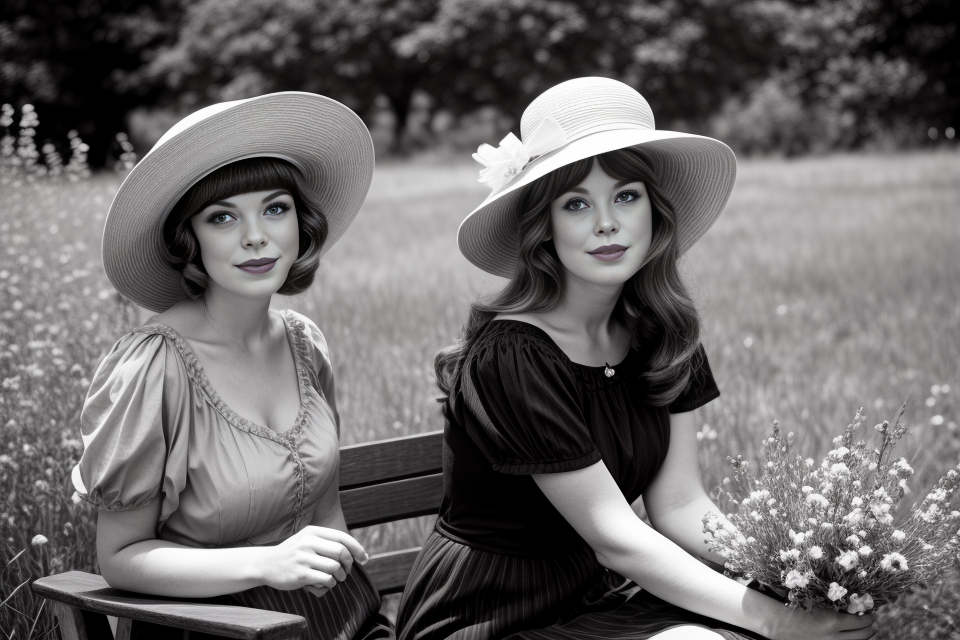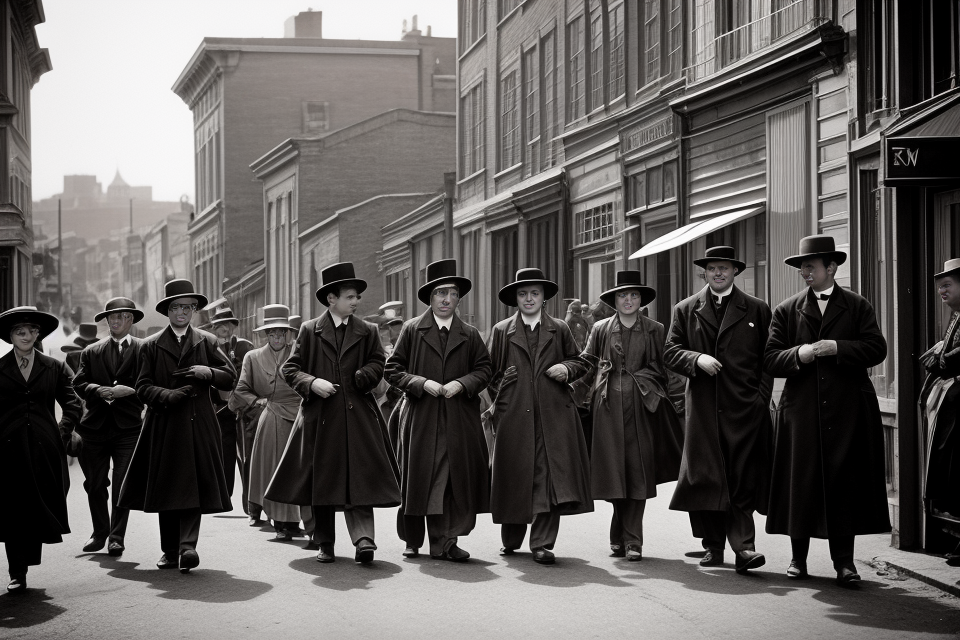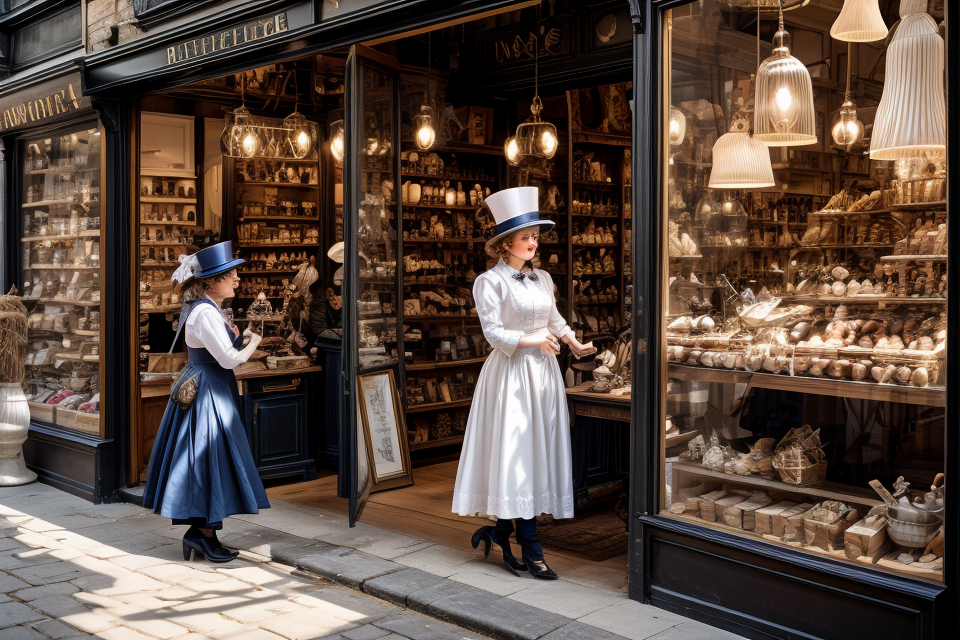Hats were once a staple in everyone’s wardrobe, but over time they have fallen out of fashion. But why is that? What caused this decline in hat-wearing? In this article, we will explore the reasons behind this fashion trend and try to understand why hats are no longer a part of our daily attire. From the practicality of modern lifestyles to the influence of popular culture, we will examine the various factors that have contributed to the decline of hats. So, let’s dive in and find out why hats have fallen out of fashion.
It is difficult to determine a single reason why hats have fallen out of fashion. Some possible factors include the decline of formal wear, the rise of more casual dress styles, and the availability of affordable, mass-produced clothing that does not typically include hats. Additionally, the practical function of hats, such as protecting from the sun or keeping hair dry in bad weather, is often not as necessary in modern times due to advances in technology and materials. Finally, hats require special care and can be difficult to maintain, which may also contribute to their decline in popularity.
The Evolution of Hat Fashion
The Golden Age of Hats
During the early 20th century, hats were an essential part of one’s wardrobe. They were not only a fashion statement but also served as a practical accessory to protect one from the elements. The popularity of hats reached its peak during the 1920s, with the flapper hats and the beecher hats being the most iconic styles of the era. Hollywood also played a significant role in the popularity of hats during this time, with actresses such as Mary Pickford and Lillian Gish often seen wearing elaborate hats in their films.
However, by the 1960s, the popularity of hats had begun to decline. This was largely due to the changing social and cultural attitudes of the time. The youth culture of the 1960s rejected the traditional fashion of their parents and grandparents, and instead embraced a more casual, informal style. This led to a decline in the popularity of hats, as they were seen as old-fashioned and out of touch with the new youth culture.
Despite this decline, hats have experienced a resurgence in popularity in recent years, with many people choosing to wear them as a way to express their personal style and to protect themselves from the sun. However, the decline of the 1960s marked a significant turning point in the history of hat fashion, and it is still felt today.
The Resurgence of Hats in the 21st Century
- The influence of celebrities and fashion icons
Celebrities and fashion icons have played a significant role in the resurgence of hats in the 21st century. These individuals have massive followings, and their endorsement of hat fashion has contributed to its revival. For instance, celebrities like Princess Beatrice, Meghan Markle, and Prince Harry have been spotted wearing hats on various occasions, and this has sparked interest in hat fashion among their followers. - The role of social media in promoting hat fashion
Social media has been instrumental in promoting hat fashion in the 21st century. Platforms like Instagram, Twitter, and Facebook have given individuals the power to share their style with a massive audience. As a result, fashion influencers and celebrities can showcase their favorite hats to millions of followers, making them more popular than ever before. Additionally, social media has enabled people to connect with others who share their love for hats, creating a community that supports the resurgence of hat fashion. - The impact of streetwear and sportswear on hat trends
Streetwear and sportswear have also played a significant role in the resurgence of hat fashion in the 21st century. Brands like Supreme, Off-White, and Palace have made hats a staple in their collections, and this has led to a surge in demand for them. Moreover, athletes like LeBron James and Serena Williams have been seen wearing hats on and off the court, making them a popular accessory in the world of sports. As a result, hats have become a crucial part of streetwear and sportswear culture, and this has contributed to their resurgence in the 21st century.
The Decline of Hat Culture
The Convenience of Modern Living
The convenience of modern living has played a significant role in the decline of hat culture. With the rise of casual attire and the changing nature of work, hats have become less of a necessity and more of a fashion statement. Additionally, the impact of technology on communication and socialization has led to a decrease in the need for hats as a means of protection from the elements.
- The decline of formal wear and the rise of casual attire
- As formal wear has become less common in everyday life, hats have lost their practical function of protecting one’s head from the elements.
- With the rise of casual attire, hats have become less of a necessity and more of a fashion statement.
- The impact of technology on communication and socialization
- The widespread use of technology has led to a decrease in the need for hats as a means of protection from the elements.
- With the ability to communicate and socialize indoors, hats are no longer necessary for protection from the elements.
- The influence of the environment on hat fashion
- The changing nature of the environment has led to a decline in the need for hats as a means of protection from the elements.
- With the ability to control temperature and lighting indoors, hats are no longer necessary for protection from the elements.
The Stigma of Hat Wearing
In recent years, the wearing of hats has become less popular, and there are several reasons for this decline. One of the main reasons is the stigma associated with wearing hats.
- Association with certain subcultures
Hats have long been associated with certain subcultures, such as gangs and punks. These associations have led to the perception that hat wearers are part of these subcultures, which can be seen as threatening or intimidating to others. This association has led to a negative connotation of hat wearing, which has contributed to its decline in popularity.
- Stereotype of hat wearers as being anti-social or criminal
Another factor contributing to the stigma of hat wearing is the stereotype that hat wearers are anti-social or criminal. This stereotype may be based on the fact that hats are often associated with certain criminal activities, such as bank robbery or drug dealing. As a result, people who wear hats may be perceived as being involved in illegal activities, which can lead to them being avoided or mistrusted by others.
- Impact of cultural appropriation on hat fashion
Cultural appropriation has also played a role in the decline of hat fashion. In recent years, there has been a trend of people appropriating other cultures’ clothing and accessories, including hats. This has led to a dilution of the meaning and significance of certain hats, as well as a loss of respect for the cultures they come from. Additionally, the appropriation of hats from certain cultures can be seen as disrespectful or offensive, which can further contribute to the stigma of hat wearing.
Overall, the stigma associated with wearing hats has contributed to its decline in popularity. The associations with certain subcultures, the stereotype of hat wearers as being anti-social or criminal, and the impact of cultural appropriation on hat fashion have all played a role in this decline.
The Future of Hat Fashion
The Revival of Traditional Hat Making
- The rise of artisanal and handmade hats
- As the world becomes more interconnected, people are becoming more interested in the history and craftsmanship behind the things they wear. This has led to a resurgence in the popularity of artisanal and handmade hats.
- These hats are often made using traditional techniques and materials, and are often one-of-a-kind or limited edition.
- They are also often more expensive than mass-produced hats, but many people are willing to pay the premium for the quality and uniqueness.
- The influence of sustainability and ethical fashion on hat making
- Sustainability and ethical fashion are becoming increasingly important to consumers, and this is also reflected in the world of hat making.
- Many artisanal and handmade hats are made using sustainable materials, such as organic cotton or recycled wool.
- Some hat makers are also using traditional techniques to create hats that are both sustainable and stylish.
- In addition, some hat makers are working to ensure that their products are made in an ethical and fair manner, by paying fair wages to workers and using environmentally friendly processes.
- The impact of technology on traditional hat making techniques
- While technology has made many aspects of hat making more efficient, it has also had an impact on traditional techniques.
- For example, some hat makers are using 3D printing to create custom-fit hats, while others are using laser cutting to create intricate designs.
- These technologies are allowing hat makers to create hats that are both traditional and innovative, and are helping to keep the art of hat making alive.
- In addition, technology is also being used to help preserve traditional hat making techniques, by allowing hat makers to digitize and document their methods for future generations.
The Reinvention of Hat Fashion
Hat fashion has undergone a significant transformation in recent years, with new designs and styles emerging that reflect the changing preferences and values of modern society. One of the key factors driving the reinvention of hat fashion is the role of technology, which has enabled designers to explore new materials, shapes, and colors that were previously impossible to create.
In addition to technology, streetwear and sportswear have also had a significant impact on the reinvention of hat fashion. These styles have popularized the use of oversized silhouettes, bold colors, and graphics, which have been incorporated into many of the latest hat designs.
Cultural exchange has also played a significant role in the reinvention of hat fashion, with designers drawing inspiration from traditional hat-making techniques and styles from around the world. This has led to a greater diversity of hat designs, with many incorporating elements from different cultures and traditions.
Overall, the reinvention of hat fashion reflects a broader trend towards experimentation and innovation in the fashion industry, as designers seek to create unique and memorable designs that reflect the changing values and priorities of modern society. As technology continues to advance and cultural exchange continues to flourish, it is likely that hat fashion will continue to evolve and adapt to the needs and preferences of contemporary consumers.
The Importance of Hat Fashion
- The role of hats in self-expression and personal style
- Hats have long been a popular accessory for expressing one’s personal style and fashion sense. They offer a unique way to add depth and character to an outfit, and can be worn in a variety of ways to suit different occasions and styles.
- Hats also allow individuals to showcase their individuality and creativity, as they can choose from a wide range of styles, colors, and materials to create a look that reflects their personality and interests.
- The impact of hat fashion on cultural identity and heritage
- Hats have played a significant role in many cultures throughout history, often serving as a symbol of social status, religious affiliation, or cultural identity.
- In some cultures, hats are an essential part of traditional dress, and are worn on special occasions or as part of religious or cultural ceremonies.
- Hats can also serve as a way to connect with one’s cultural heritage, as they can be passed down through generations and hold sentimental value.
- The potential for hat fashion to promote inclusivity and diversity
- Hats have the potential to promote inclusivity and diversity in fashion, as they can be worn by people of all ages, genders, and backgrounds.
- Hats can also be adapted to suit different hair types and styles, making them accessible to a wide range of individuals.
- In addition, hats can be used to express solidarity with particular groups or causes, and can serve as a way to show support for diversity and inclusivity in fashion.
FAQs
1. Why Have Hats Fallen Out of Fashion?
Hats have fallen out of fashion for a variety of reasons. One reason is that hats were traditionally worn as a sign of respect or as a symbol of social status, and in modern times, these traditions have become less important. Additionally, the practical function of hats, such as protecting from the sun or keeping hair clean, has become less of a concern as technology has improved. Finally, the popularity of other forms of headwear, such as baseball caps and headbands, has led to a decline in the popularity of traditional hats.
2. Are There Any Situations Where Hats Are Still Required?
Yes, there are still some situations where hats are required or expected. For example, in certain religious or cultural ceremonies, hats may be worn as a sign of respect or as part of a traditional dress code. In certain professions, such as law enforcement or the military, hats may be worn as part of the uniform. In these situations, hats may still be an important part of the dress code, but in general, they have become less common in everyday wear.
3. Are There Any Benefits to Wearing Hats?
Yes, there are several benefits to wearing hats. Hats can provide protection from the sun and other elements, such as rain or wind. They can also help to keep hair clean and protected from damage. In addition, hats can be a fashion statement and can be used to express personal style. Some people also find that hats help to keep them cool in hot weather or warm in cold weather. Overall, hats can be a practical and stylish accessory for many occasions.



